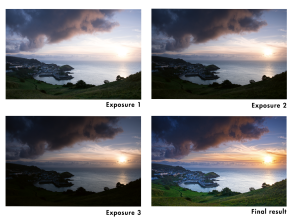An Essential Photography Question Answered: How Do I photograph a Sunset?

Ever wondered how to capture a sunset on camera and do it justice? In How do I Photograph A Sunset?: More than 150 essential photography questions answered, Chris Gatcum provides the answer to this and many other questions.
How do I photograph a sunset?
As the sun goes down and the sky is transformed by a fiery dance of light, photographers the world over line up to record this natural spectacle. Many come away with photographs that are – quite literally – a pale reflection of the event, with all of the vivid hues somehow washed out when their shot was taken. However, it’s not too difficult to ensure the intensity of your photographs matches the vibrancy of the spectacular sunset you are seeing – try these tips:
● Colour is one of the most important features of a sunset, so before you do anything else, switch your camera’s white balance to its Daylight (‘sunny’) setting. Steer clear of Auto white balance or your camera will try and remove the overly warm orange/red colour of the sunset, thinking it’s a colour cast.
● The next critical consideration is the exposure. You want to make sure you expose for the relatively bright sky and not the darker ground beneath it – exposing for the ground will almost certainly give you a washed-out sky. A good option here is
to switch to spot metering and aim your lens at a point in the sunset sky that isn’t too bright and isn’t too dark, so not the sun and not a dark cloud – a patch of clear sky maybe 10–15 degrees above the sun is often a good spot. Alternatively, use multi-area metering and negative (–) exposure compensation to dial down the exposure – start by setting –1 stop of compensation and take it from there.
● The previous steps will get you a vibrant sunset, but chances are the ground will be too dark. If that’s okay, then great, but if you want a better balance between the exposure for the bright sky and the darker ground you’ll need to get technical. One option is to use a neutral density graduated filter (or ND grad), which will darken the exposure for the sky without affecting the brightness of the ground, or you can make two different exposures – one for the sky and another for the ground – and combine them when you process your images. In either case, a tripod will help keep things steady as the light slowly fades.

With the sun in the frame I decided to use a 3-stop ND grad filter and multiple exposures to achieve this shot. On its own, the filter simply wasn’t strong enough, but it enabled me to cover the dynamic range of the scene in just three shots.


